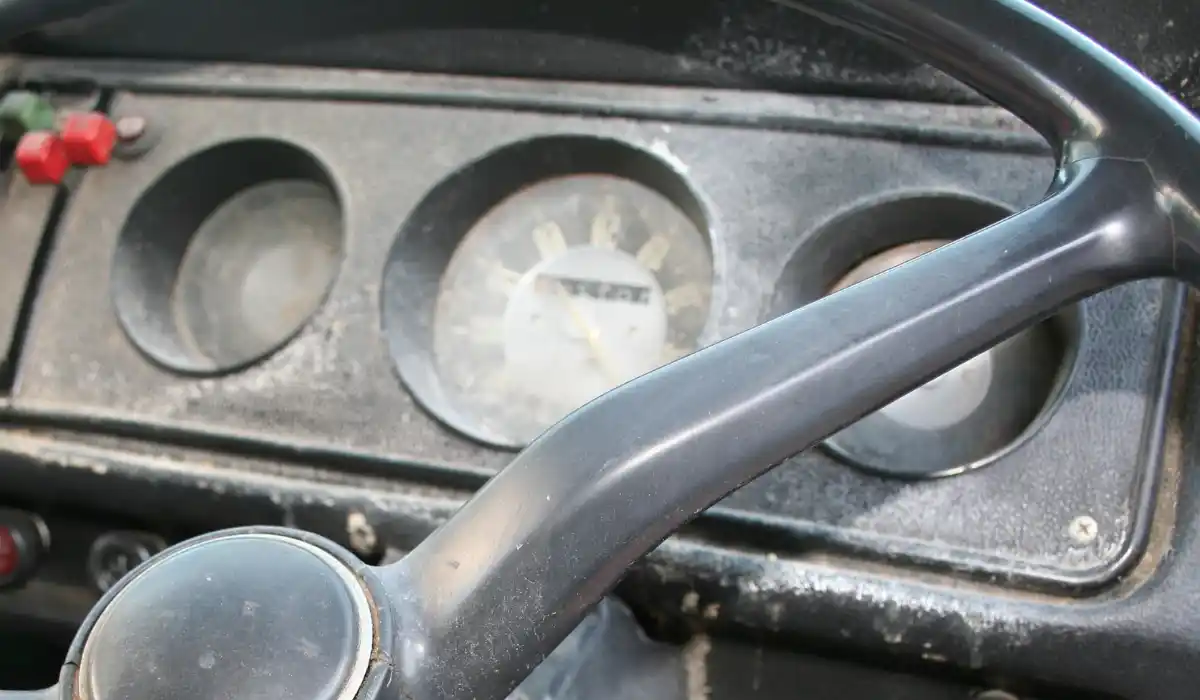
The cabin air filter in your car is designed to protect the occupants from outside dust, pollen, and pollution.
But if you don’t change it regularly (both for your health and to maintain strong airflow), you’ll gradually notice a reduction in air quality.
The good news is that replacing the cabin air filter in your car is easy!
Jump Ahead To:
What is a Cabin Air Filter?
A cabin air filter is a bag that traps pollen, dust, and other particulate matter from the outside environment. Most vehicles have more than one cabin air filter. They are located in front of your seat on both sides of the car, as well as in the rear of your car on the passenger side.
Cabin air filters are also known as a “mid-size filter” or a “mid-size pleated paper filter. These filters are cheap, easy to change, and can make a considerable difference in your vehicle’s interior air quality.
It is very important to replace the cabin air filter in your car at least once or twice per year. Your car’s interior temperature can reach 175 degrees F (80 degrees C) on extremely hot days. A clogged cabin air filter will not allow moisture to escape when the air conditioner turns on, which can cause damage to your dashboard and other interior parts.
Cabin air filters are made of lightweight plastic most often, but are also available in fiberglass, paper, and metal. Some manufacturers offer a cabin air filter that is designed to be washed after several months of use.
A typical cabin air filter contains three layers: the primary screen that captures dust and dirt, a smaller secondary screen that catches larger particles, and a sponge-like padding to prevent clogging elsewhere in the filter’s ducting.
Signs of a Dirty Cabin Air Filter
If your car’s cabin air filter is dirty or has become damaged, you will begin to notice the following:
- A stopped-up air conditioner. Your air conditioner may not be able to blow as much cold air as usual.
- Your car’s interior may feel dusty and possess a slight odor.
- The odors and dirt particles that you do smell may be worse than before you installed the filter.
What happens when the Cabin Air Filter is Dirty?
It’s hard to imagine a cabin air filter causing a lot of damage to a vehicle, but that is often the case with clogged filters. If the cabin air filter is not replaced regularly, heavy dust and dirt particles can accumulate on the surface of the cabin air filter over time.
When this happens, it may block intake airflow from the outside environment. The result? Your car will become less efficient at cooling itself, and may even overheat.
How to Replace the Cabin Air Filter

Now you should know how to tell if your cabin air filter needs to be replaced, and why this is important. Now it’s time to replace it!
If you want a clean fresh supply of air, clean the cabin air filter as soon as possible. It is much easier to complete this car maintenance task before the vacuum has been broken. In fact, it should be done as soon as you begin to detect a build-up of dust inside your car, or before you can smell smelly odors from the dirty filter.
The tools needed for this task will vary depending on your vehicle. Nearly all cars with cabin air filters will require an open-end wrench to remove the filter’s cover. If you don’t have one of these wrenches, most auto parts stores will loan one to you for free.
If you find that there is a lot of dust or dirt on the filter, it may be necessary to vacuum your car before installing the new filter. Refer to your cars manual to find the exact location of the cabin air filter.
For most cars, all you have to do is loosen or remove a couple of plastic clips that are holding the filter in place. Each manufacturer has its own instructions for removing the filter.
If you have a non-standard cabin air filter, you’ll need to place it in a plastic bag and wash it with a small amount of water before installing it.
It is important not to apply any oil or lubricants to your vehicle’s interior when installing a new cabin air filter. In fact, there’s no reason to use products like WD-40 on your car’s interior, because they can damage its finishes.
Replace the cabin air filter with a new one and be sure to tighten its cover securely. Do not over-tighten clips, as this can cause them to break and leave sharp metal pieces inside your car.
There may be a small amount of dust that comes out into the car when you replace the cabin air filter. This is normal and will clear quickly after you drive your car for a few minutes. If your car’s interior is excessively dusty, you may want to use a car vacuum before closing it up.
How Long Do Cabin Air Filters Last?
Because cabin air filters are designed to last for a long time, you may not know exactly when you should change it.
If you take into consideration the average mileage a person drives per year, the lifetime of a cabin air filter can be as short as a few months or as long as several years.
The real answer is somewhere in between.
A replacement filter should be installed at least once a year to ensure that your vehicle’s interior remains fresh and clean.
How much Does it Cost to Replace the Cabin Air Filter?
The price of a cabin air filter will vary depending on which brand you use and where you buy it. A typical passenger car cabin air filter costs between $10 and $35.
Some manufacturers offer a cabin air filter that is designed to be washed after several months of use, which can save you time and money over time.
This filter is typically sold at auto parts stores. The price of these filters varies between $20 and $60, depending on the make and model of your car.
Do Cabin Filters Work Against Forest Fire Smoke?
Cabin air filters should not be used for this purpose, as they were designed to keep dirt and dust from reaching the passenger compartment of a vehicle. In fact, using a cabin air filter will actually cause your car to draw smoke from the outside environment into your car’s ventilation system, which makes the situation even worse.
Typically, a cabin air filter will catch about 90% of airborne particles as small as .3 micron. This is a very high percentage, and it exceeds the federal pollution standard.
Cabin air filters only capture the dirtiest particles, and do not prevent odors from reaching inside of your vehicle. Smoke from fires passes through your car’s ventilation system and into the passenger compartment with no problem.
Fortunately, there are other ways to remove smoke and odors from your car that can be performed without having to buy new cabin air filters.



